**  USA Customers: Enjoy up to $800 Tax Free Imports - Even with Tariffs, we're still better value than US stores! **
USA Customers: Enjoy up to $800 Tax Free Imports - Even with Tariffs, we're still better value than US stores! **
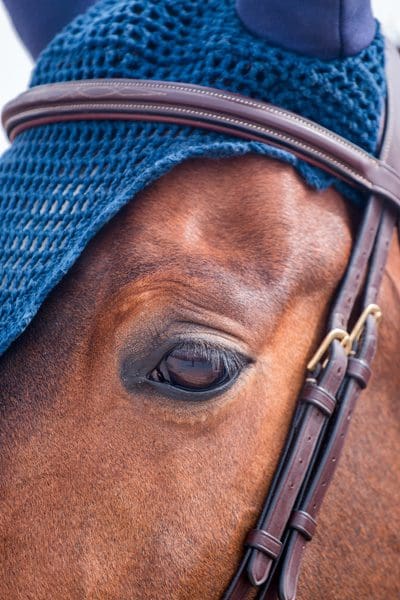
(And Why Most Riders Overlook This Problem)
Finding the best bridle for horse with sensitive ears can be a challenge, as it requires finding a horse bridle that is functional, but one that doesn’t cause discomfort or pain for the animal in that particular area.
Does your horse toss its head, flick its ears back, or get fussy when you bridle up? You’re not alone — and the issue might not be training, but discomfort. Many riders don’t realise that even a well-fitted bridle can irritate sensitive ears if the design, material, or pressure points aren’t right.
In this article, we break down what to look for in a bridle that truly supports sensitive horses — and why the right choice can transform your horse’s comfort and performance.
The horses ears are a crucial part of a horse’s anatomy, so it is important that they are looked after and not impaired by an ill-fitting bridle or halter. A horses ears can rotate almost 180 degrees, and move independently of each other. Not only are they a key indicator of its mood, but a horse’s hearing is much more acute than our own and can listen in two directions at the same time. Although their ability to zero in on a sound is not very accurate, they can tell the general direction of the noise and know how to run in the opposite direction!
There are a lot of sensitive facial nerves in a horse’s head and head shyness is a common issue, particularly when it comes to touching a horse’s ears and the daily routine of bridling, combing, clipping and brushing can become a struggle. It’s not just problematic but can be hazardous whilst grooming or tacking up, making it essential to understand the underlying source of ear shy horse behaviour.
It is rare for ear ailments to generate pain, itching, or discomfort in horses. As a consequence, these are not usually seen as potential causes of equine behavioural problems. Because horses have various responses to pain and fear, you may be able to discern if a horse has an ear problem or is experiencing ear pain by observing it and touching its ear. If a horse turns its head in a circular motion rather than the conventional up-and-down motion, it may be a sign of ear discomfort. In the small chance ear ticks are responsible, you may need to enlist the assistance of a vet to investigate soreness.
Just as humans vary in their physical sensitivities, some horses feel discomfort or unease when their heads or ears are touched, but ear sensitivity can also arise from negative experiences, like rough ear handling, or ear twitching as well as more innocuous events, such as an ill-fitting bridle or headcollar that has put pressure on sensitive nerves causing the horse pain in the past.
If you have managed to eliminate other causes of ear sensitivity, but it is still a battle to put the bridle on your horse, then it may well be the bridle causing the issue.
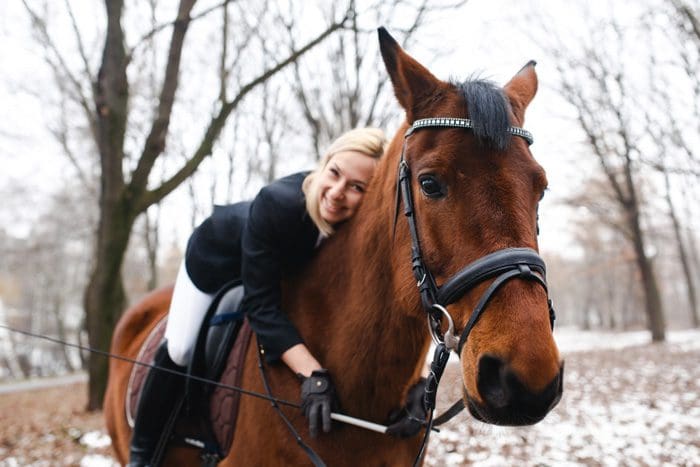
When choosing a bridle for a horse with sensitive ears, it’s important to understand how the shape of your horse’s head and specifically the area around the ears can cause bridle problems. The part of the bridle that is likely to affect a horse’s ears more than any other is the headpiece or headstall, where it can push against the base of the ears, impacting the atlas and the poll (the part of the horse’s head immediately behind or between the ears).
The space between the back of the ears and the first cervical vertebra C1 (known as the atlas) can vary greatly among horses. Normally a wider headpiece reduces the pressure over the poll area, but if the atlas is close to the back of the ears, you will find very little space. Whilst there is some muscle coverage, a headpiece that has been narrowed at the sides may reduce the poll pressure in that area. In this case, additional padding may not be the answer as it can serve to actually make the bridle more unstable causing problems elsewhere.
Look for a bridle made from soft, supple quality leather that won’t chafe or rub against the horse’s ears. Avoid stiff or hard leather that could cause discomfort. A bridle with padding on the headpiece, browband and noseband can help to distribute pressure evenly and reduce the risk of rubbing or irritation.
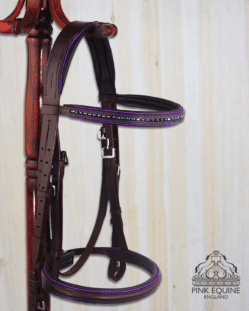
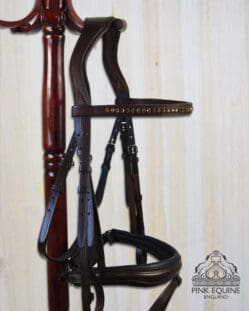
Ensure that the bridle has been measured accurately and is the correct size for your horse, with the headpiece and browband adjusted to fit comfortably without putting too much pressure on the ears. Make sure the bridle is not too tight, as this can also cause pain and discomfort.
Some bridles have a more anatomical design that is specifically intended to reduce pressure on sensitive areas of the horse’s head, including the ears. Consider looking for anatomical bridles with a more ergonomic design to provide additional comfort for your horse.
Try the bridle on your horse and observe his behaviour. If he seems uncomfortable, shakes his head, or rubs his ears, the bridle may not be a good fit and should be adjusted or replaced.
The way a bridle fits a horse is influenced by its conformation. Since most horses don’t have a perfectly symmetrical head, the shape and fit on one side may require adjustments different from the other. Therefore, it’s crucial for a bridle manufacturer to have the flexibility to cater to these variations rather than adopting a one-size-fits-all approach. Let’s look at our top five best bridles for horses with sensitive ears.

The Pink Equine Comfort Precision bridle has been designed specifically with the sensitive horse in mind. The anatomically designed bridle is made from soft supple leather with a uniquely designed comfort poll, that avoids pressure in the centre and enables precise placement of the sides parts for maximum comfort, allowing for more movement and clearance around the horses poll and ear area.
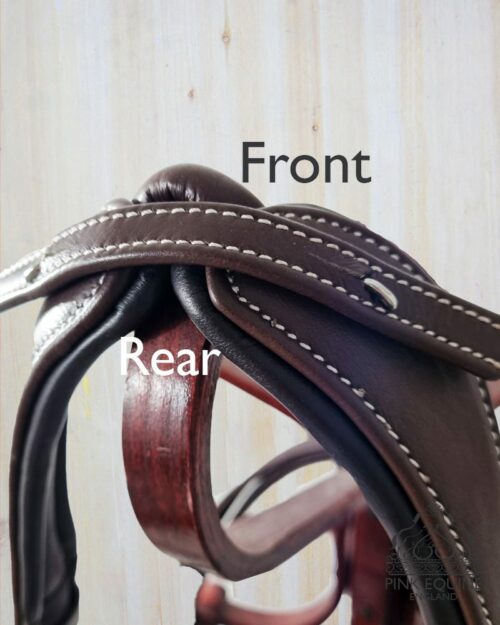
The ergonomic bridle is crafted from the finest quality Italian leather hand stitched and can be custom-made to your exact specifications. The bridle has a wide softly padded noseband aimed at evenly spreading any pressure on the horses nose area.
The Pink Equine comfort bridle is available in a wide range of noseband styles.
Retail Price £224.99
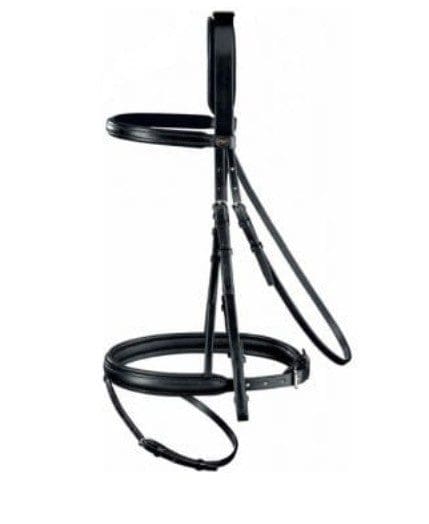
The Passier Bridle features a padded noseband with flash attachment and a plain padded straight-cut browband. The headpiece is also softly padded and the attachment of the noseband to the headpiece reduces pressure on the horse’s poll.
The flash noseband helps to keep the horse’s mouth closed and prevents evasion. The Passier brand is known for its quality craftsmanship and attention to detail.
Retail Price £279.99
The flash noseband may not be suitable for horses that have sensitive mouths or are easily irritated by pressure.
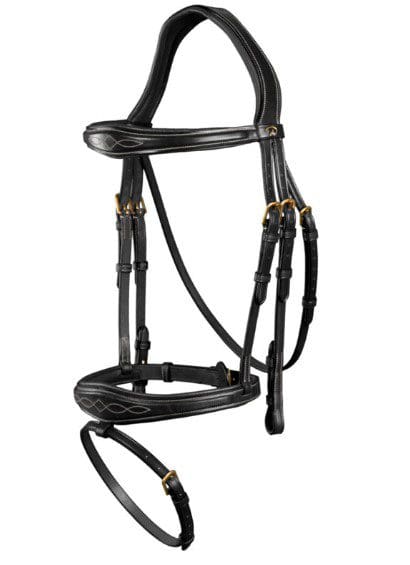
The Dy’on elegant leather bridle has been designed with an anatomic headpiece and noseband to fit the horse’s head shape. The bridle has an attractive browband and noseband design. The anatomic shaped headpiece is wider than “classic bridles” and padded with 2mm of neoprene for comfort to ease the pressure on the poll behind the ears.
The Dy’on brand is known for its high-quality leather and attention to detail and the bridle is available in black or brown leather.
Retail Price £267.00
The anatomic design may not fit all horses equally well, and some horses may find it uncomfortable.
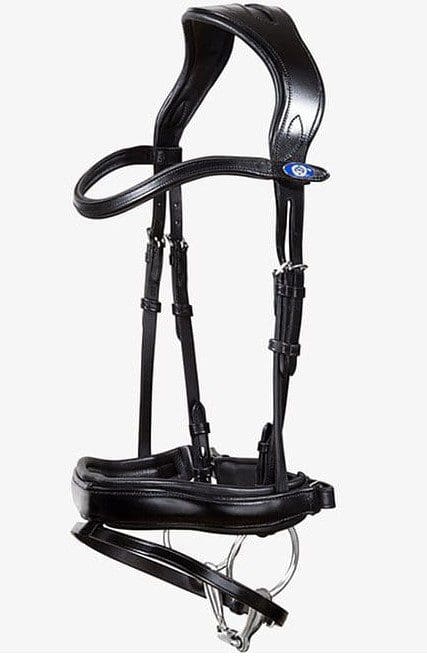
The PS of Sweden Bridle has a shaped headpiece that reduces the pressure behind the sensitive ears and the top of the neck of the horse. The extra padding offers more space for the ears to move naturally.
The noseband has a slim design to allow for freedom around the cheekbones and the nerve endings and the browband has a unique click design allowing you to swap out the browband in a few seconds. The PS of Sweden brand is known for innovative designs and the bridles are made from English, vegetable-tanned leather.
Retail Price £245.00
The anatomically designed noseband may not fit all horses equally well, and some horses may find it uncomfortable.
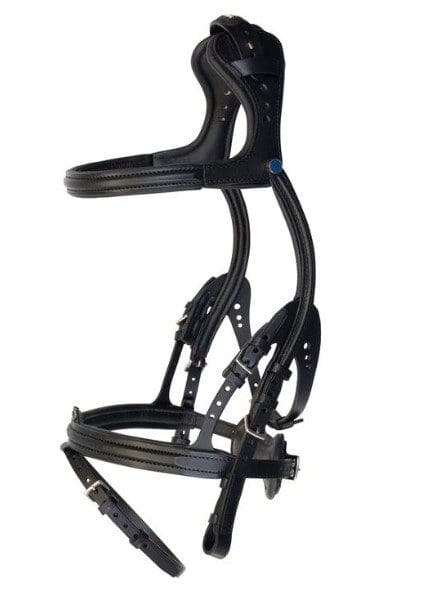
The Stübben snaffle Freedom bridle allows the horse to move their jaw freely while still maintaining control. The innovatively designed cheekpieces help the horse’s field of vision and the design of the bridle fully preserves freedom of movement for the horse‘s ear.
The special position of the headstall and the throat strap keep the horse‘s sensitive areas in the neck and the throat free from pressure. The Stübben brand is known for its quality craftsmanship and attention to detail.
Retail Price £399
The most expensive option on the list and the Freedom design may not be suitable for horses that require a more traditional style of bridle. The padding on the noseband may be too thick for some horses, depending on their facial structure.
Properly fitting and adjusting a horse bridle is crucial for both the horse’s comfort and performance, especially if your horse is sensitive around the head and ear area. Here are some tips to help you deal with the issue and achieve the optimal fit:
When dealing with a horse’s ear sensitivity, it is advisable to bridle the horse without coming into direct contact with its ears. One option is to use a bridle that can be unbuckled on the side, allowing the headstall to be placed carefully around the back of the ears before fastening it again on the side. If the horse displays ear-shyness, it’s best to refrain from handling its ears altogether. Instead, it’s recommended to begin by gently rubbing the horse’s neck until the horse is happy and relaxed.
Make sure that the headpiece is not too tight. A headpiece should not compress your horse’s ears or its neck. Any unwanted pressure on your horse’s ears due to a tight headpiece will continue to cause discomfort and exacerbate the problem of ear sensitivity in your horse.
Once the rest of the bridle is in place check the noseband: The noseband should be adjusted so that it is snug, but not too tight. You should be able to fit two fingers between the noseband and the horse’s face.
Carefully adjust the cheek pieces: The cheekpieces should be adjusted so that the bit sits at the correct height in the horse’s mouth. Make sure that there is ample space between the cheekpieces and the ear cartilage of your horse. Additionally, the cheekpieces should not compress the lower jaw of your horse.
The bit should fit comfortably in the horse’s mouth sitting snugly against the horse’s teeth without causing discomfort. There should be approximately a 1/4 inch of bit visible on either side of the horse’s mouth. If the bit is too small or too large, it can cause discomfort or even injury.
The browband should be adjusted so that it sits comfortably behind but away from the horse’s ears. It should not be too tight or too loose.
The throatlatch should be adjusted so that you can fit two fingers between the strap and the horse’s throat.
Finally check the reins. The reins should be adjusted so that they are the right length for the horse’s neck and head. They should be long enough to allow the horse to move freely, but not so long that they become tangled or difficult to manage.
Once you are happy with the bridle you should observe the horse for signs of discomfort or irritation. The horse should be able to move freely and comfortably, without showing any signs of distress or pain.